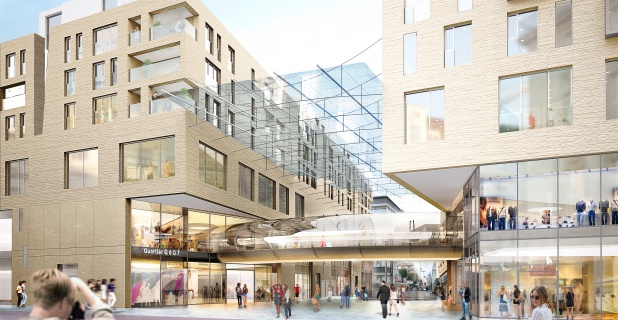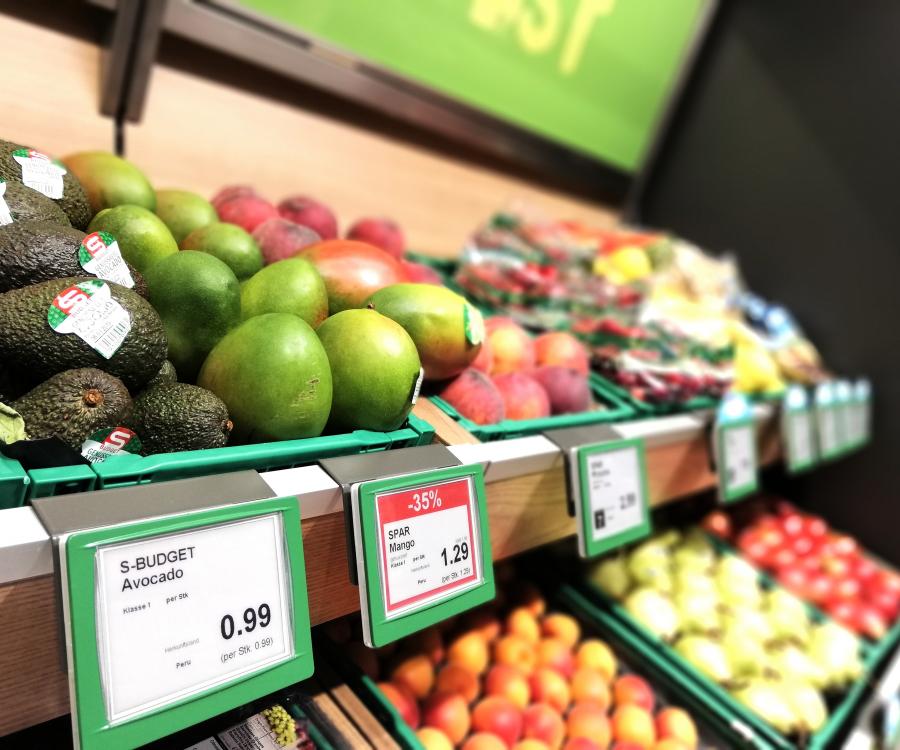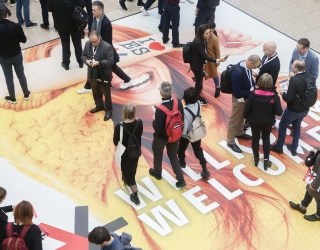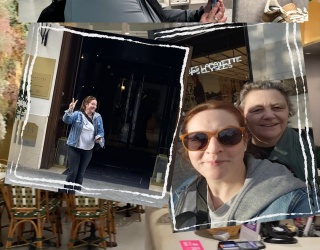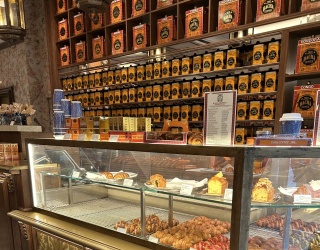Retail vocabulary is changing. When you follow trade press coverage, it appears that terms such as omnichannel, touchpoints or augmented reality threaten to replace traditional entities such as sales floor, POS or display windows.
Yet the digital and analog worlds are not opposites, but rather complement each other. For brick-and-mortar retailers this means becoming aware of their strengths and consequently expanding them. An evolutionary process that could end with stronger brand equity and higher profits.
Human beings have a desire for touch and discovery, for sensual experiences. There is a reason why city centers experience a renaissance right now. Our idea of a functioning city center has always been shaped by factors like complex shapes, vitality and sensuality. A mix of places, parks, cafés, stores, businesses, apartments and offices. After years of imminent deterioration and uniformity, European cities are now in the process of getting back to their own idea of a marketplace. The future of Europe’s cities belongs to mixed-use development projects. The more transparent their design becomes against public spaces, the more they will benefit from their aura and vice versa.
Such a city district with an extroverted form is currently being built in Mannheim, Germany, under the name of Q 6 Q 7. Exemplary for this object are the retail spaces that open towards the street on the first floor. The almost continuous two-story glass plinth area lets interior and exterior spaces merge optically. The customer senses the retail atmosphere as he or she walks by and is able to enter into a dialog with the contents of the mall. The shopping center increasingly perceives itself as a part of the overall urban structure; the architectural structure communicates this self-image to the outside.
The sizzle sells the steak
Today food establishments play an important role – whether it pertains to the shopping mall or the modern department store. During its last renovation, clothing retailer Engelhorn in Mannheim started to support its trading up process with its introduction to high gastronomy. It opened the elite restaurant “Le Corange“. Next came the “Faces Lounge“; last fall, it added the gourmet restaurant “Opus V“ that complements the upper crust of exquisite product choices. This kind of gastronomic option embraces people‘s changed understanding of living in the city and their high demands for a satisfying shopping experience.
Today, fashion retailer Garhammer in Waldkirchen also fulfills this need more than ever before. After perhaps the most extensive renovation and new development campaign in the 117-year-old history of the family business by Blocher Blocher Partners, many aspects have changed, became more beautiful and more generous. During three construction stages, the multilayer retail property was carefully enlarged and its inventory streamlined – and expanded by a large new 2,500 square meter building that is attached to the old building via different glass skyways.
The company now also offers various gastronomic options; among others, the gourmet restaurant “Johanns“. The merging of service, quality and added gastronomic value turns the visit into a sustainable experience that appeals to all senses. And the name “Garhammer“ is charged with additional, positive associations.
Digital meets analog
The examples of Garhammer and Engelhorn demonstrate that the unused potential of many brick-and-mortar retailers can be best discovered when you take a closer look at the relationship between company and customer. Oftentimes, retail still has a pent-up demand in terms of service and appeal. For a long time it even seemed as if the slogan “the customer is always right“ had been forgotten; and yet more than ever, today’s customer holds all the aces. Thanks to the Internet, he or she is well informed and wants to profitably invest his or her time, which is becoming increasingly more precious. This is why it is even more important for retailers to invest in their own brand and image.
Of course filling sales and marketing channels is not being ignored either. Investing in omnichannel options pays off, because customers don’t have to first enter into the store to encounter the brand. Today the retailer can be accessed from home, while you are on the go and of course in the store itself. Never before did companies have such extensive options to communicate with the customer.
It requires a long-term strategy to reach customer on all channels, incidentally also to connect online and offline in the store itself. From the retailer’s point of view, the very first step is to reconcile the retailer’s image of him or herself with the perception on the market. This might also help to become aware of your own potentials and to consider which sales approaches or rather what channels you want to utilize.
One example for this is the new mono-brand retail concept for the natural clothing brand hessnatur. The company wants to position itself in brick-and-mortar retail after its focus has so far been on mail order sales. The brand seeks to objectify – and thus has already learned a lot from the current trend, namely the mutual give and take of online and offline options.
You can also see this in the store itself, where the Blocher Blocher Shops office for mono-brand development created a natural and low-key aura that is complemented by modern technology such as the integration of tablets and augmented reality for instance. All of this in the interest of discerning customers, who now have the chance to look into the products’ sustainability even more. This way, the company communicates with the customer on all channels and makes the world of hessnatur graphic and tangible.
So how can retailers rise to the challenges of medial omnipresence? Each brand, each company needs to find its individual path – depending on its own target audience, its own goals and its own philosophy. Yet one thing is for sure: physical presence continues to be a substantial variable in the success equation. In the end, good old values and new strengths open up brand-new possibilities for retail.
About the Author: Angela Kreutz is Head of Communication for Blocher Blocher Partners and as a partner responsible for brand communications.

